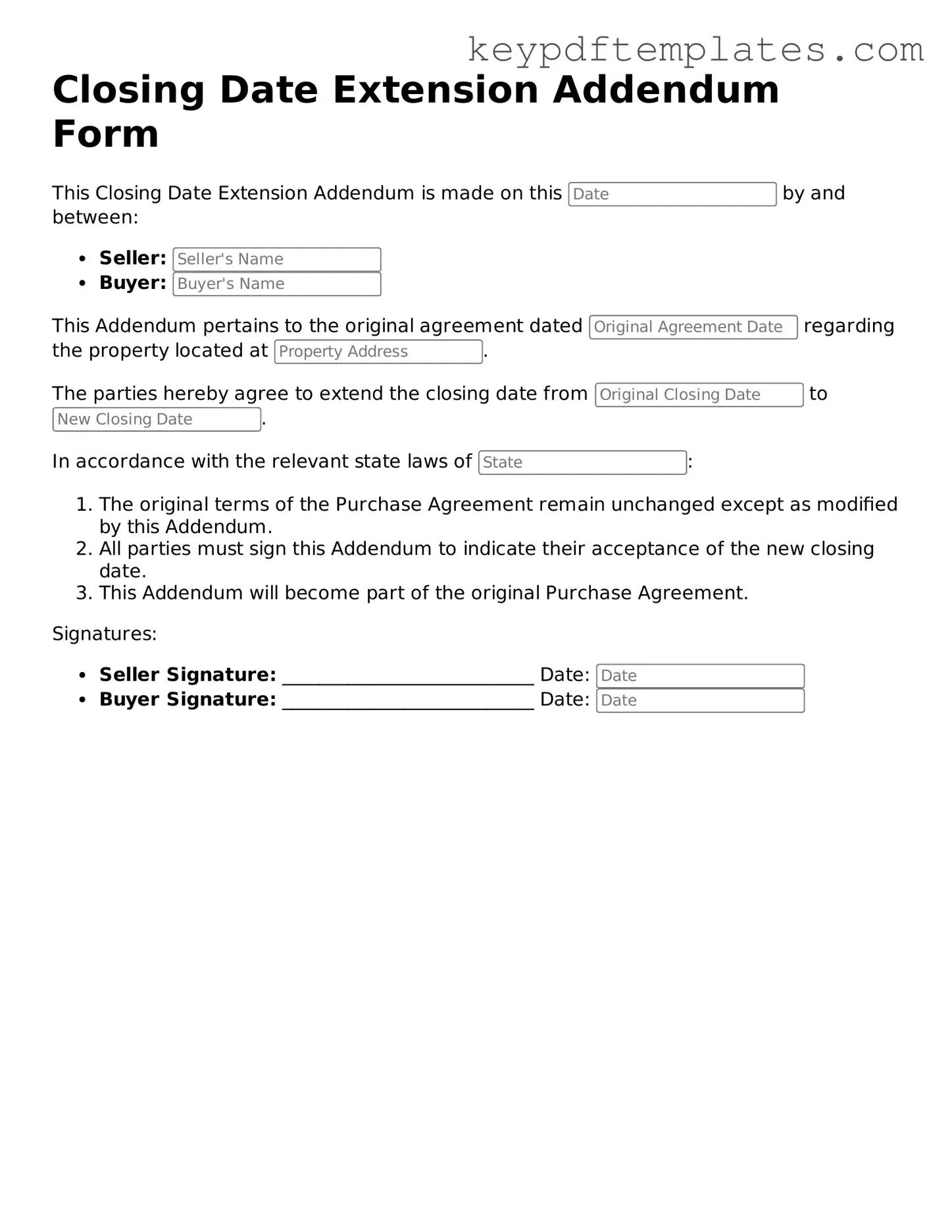Printable Closing Date Extension Addendum Form Template
The Closing Date Extension Addendum Form is a legal document used in real estate transactions to extend the deadline for closing a sale. This form serves to formalize the agreement between the buyer and seller regarding the new closing date, ensuring both parties are aligned on the revised timeline. By utilizing this addendum, parties can avoid potential disputes and maintain clarity throughout the transaction process.
Modify Document Online
